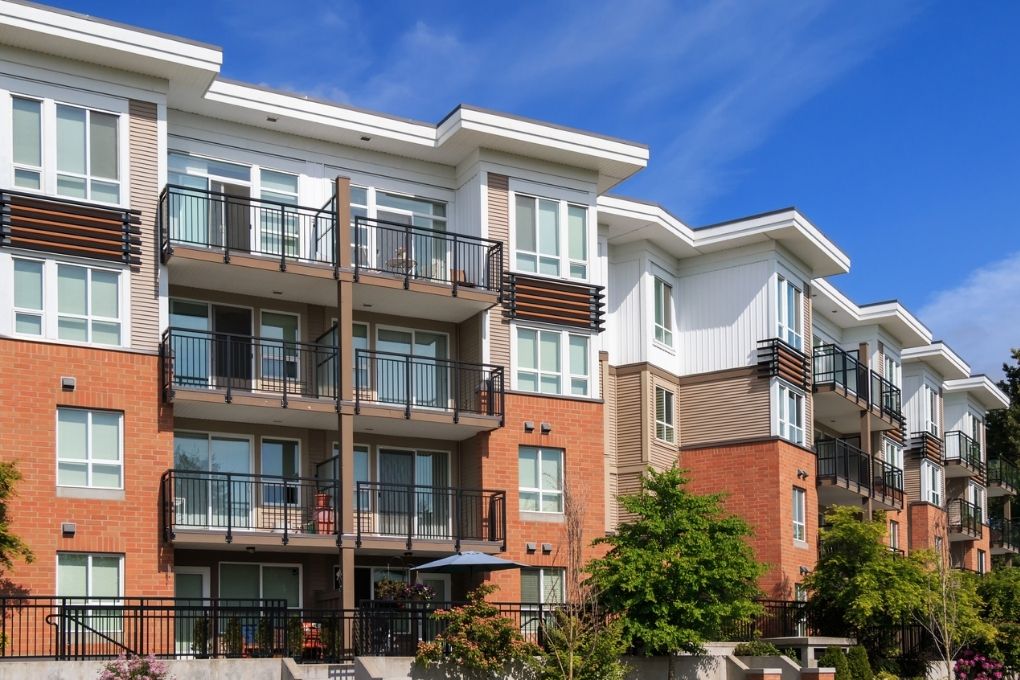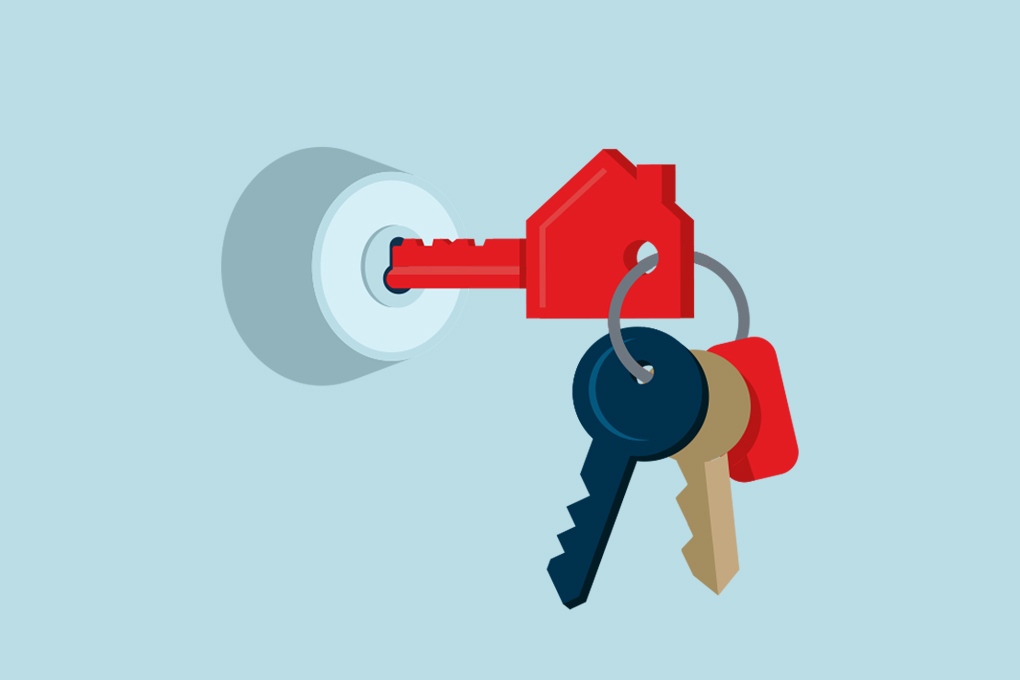What is a multiunit rental property?
A multiunit property, or multiplex, is a rental property with more than one rental unit. The important thing to remember is that the process and the rules for the purchase of a multiplex with five apartments or more is different from those for the purchase of a multiplex with four units or less.
How to finance the purchase of multi-family real estate with five units or more
To purchase this type of real estate, which is considered as a commercial asset, you’ll need to apply for a commercial mortgage loan. That’s one of the biggest differences between buying a building with five units or more and buying a building with four units or less, for which you would apply for a normal mortgage loan, same as if you were buying a regular home. The differences between these two kinds of loans lie in the qualification criteria.
Qualifying for this kind of load will mainly depend on the profitability of the building, although other criteria will also be taken into account, such as your experience in real-estate management, the location of the building, its state, the occupation rate of the units, and the liquidity at your disposal after you’ve obtained financing for the property.
Debt-to-income ratio
The bank will calculate the rental income as well as the expenses, which includes mortgage payments, insurance, taxes, heating, electricity, and maintenance and administration services. Generally speaking, you should aim for a debt coverage ratio of 1.25. In other words, your cash flow should exceed your expenses by at least 25%.
The building’s profitability (coverage ratio)
To find out whether a multiplex will be able to generate income, don’t rely solely on the gross income multiplier (GIM), which is calculated by dividing the sale price by the income. For a more accurate analysis, take your expenses into consideration too by using the net income multiplier (NIM) and the capitalization rate (cap rate).
You can calculate your net income after subtracting all operating costs (electricity, heating, property taxes, insurance, upkeep, snow removal, management or maintenance fees, etc.). For example, if you paid $1.4M for a building with 5 units and your net annual income is $90,000, that means your ratio is 15. To get a good return, aim for a ratio between 10 and 16.
The cap rate is a percentage that gives you an estimate of the income property’s value. This information represents proof of the rental property’s price when you apply for financing.
You get the cap rate by dividing your net income by the sale price. The higher the cap rate, the better the net operation benefits compared to the sale price.
The cap rate can fluctuate with inflation, current interest rates, and the real-estate market.
The buyer’s financial situation
Please note that even though it’s not part of the calculation for your loan, your personal financial situation will still be evaluated. Your bank will want to make sure that you manage your money well and that you can handle any unexpected events (urgent repairs, vacancies, notary and accounting fees, etc.).
Stay informed
Sign up for our newsletter to get recent publications, expert advice and invitations to upcoming events.
What other financing options are there for a multiplex with five units or more?
Other than commercial mortgage loans, you could remortgage another of your properties. This is called leveraging, and it consists of refinancing one asset to buy another using all of your authorized credit, knowing that the interest on a mortgage loan is tax deductible for rental properties.
Outside of bank loans, you could also borrow money from a family member or from a private business partner. The important thing is to get advice from an expert to make sure that your plan is your best option.
How big of a down payment is required for a multiplex with five units or more?
The percentage you need as a down payment to purchase a 5-unit multiplex versus a 12-unit multiplex is the same. But the location of your future property could make a difference in the minimum you need for a down payment.
In a major urban area
Generally speaking, for a building in a city with over 10,000 inhabitants, banks ask for 25% of the purchase price as a down payment.
However, the down payment can be lowered to 15% if you have mortgage loan insurance. For example, if you get insurance with the Canada Mortgage and Housing Corporation (CMHC), you will be granted a 10% reduction in the down payment requirement. You could also benefit from a better rate, as it will lead to less of a risk of loss for the bank granting you the loan in case you default on your mortgage.
Another advantage: a decrease in the interest rate of an insured loan, despite the premium you’ll have to pay, means that you’ll get better returns on your down payment than with a conventional loan.
Outside the big city
Thinking of purchasing a building in a small town? The bank may determine that it’s a higher risk. For example, if an employer in the area laid off a large part of their staff, this could lead to an exodus and reduce your pool of eventual tenants, or even potential buyers if you decided to sell your property.
Lenders may seek to mitigate the risks by granting less financing or asking for a larger down payment. Generally speaking, the down payment should be 25% of the sale price, or 15% if your loan is insured by the CMHC. Keep in mind that it varies case by case.
Tip: If your property has a commercial space on the ground floor, the same down payment is required, but your debt can only be amortized for up to 20 years, instead of 25 years for entirely residential buildings.
These rules apply in all provinces in Canada.
How do you make the best real-estate investment?
What you should look for when buying multi-family real estate
To make a good multiplex investment, it’s crucial to be well-prepared to limit any surprises as much as possible and make managing the building easier.
- It’s important to pay particular attention to the quality of the building’s construction to avoid hidden defects.
- We recommend having the property inspected by a building inspector and to do an environmental analysis of the ground on which the building is built.
- In terms of location, it may be a good idea to look for a building close to jobs and services: stores, schools, hospitals, public transit, etc.
- We also recommend avoiding entities with too high of a turnover rate with tenants, which will require more work in terms of management as well as higher costs. However, avoid small apartments, such as rooming houses and short-term rentals.
- Focus on rental property that have apartments with at least three rooms. They’re more popular with renters and there’s generally less turnover.
- We also recommend researching the income and costs from the last few years, as well as the current and future features of the city or neighbourhood.
- You could also request to meet with the current tenants and ask them some questions, like if there’s been any water damage or mould, if the tenants get along with one another, if they feel safe in their neighbourhood, etc. Get them talking – you could learn much more than you expect.
- Do your research with the rental board, the city, and the housing ministry. Make sure there aren’t any unpaid taxes, fines, or pending violation notices. You wouldn’t want to pay for the previous owner’s problems.
The better prepared you are, the better your experience will be and the higher your chances of achieving profitability with your new property.
Anticipating the unexpected
You also have to take a good look at the financial resources you have available in case of any unforeseen circumstances. Usually, you need to be able to reinvest at least 10% of the building’s value.
Is it better to buy residential income property before investing in commercial rental property?
The answer to this question depends on your situation and your objectives. Many people jump right into commercial real estate because it’s more profitable. But for commercial properties, we recommend starting with relatively small buildings with five, six or eight units.
Finally, keep in mind that real estate requires more time and management than other types of investments. You need to make an effort to make a profit, or hire a building manager.
It’s also an asset that will probably take longer to sell than a stock option. Conversely, it’s a tangible investment vehicle, which some investors appreciate more. Feel free to talk about your project with one of our advisors. We’re here to answer your questions.



